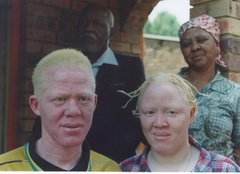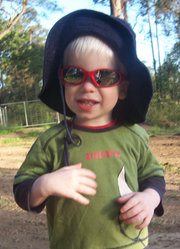ABSTRACT - During a study of the effects of forest management on small-- mammal populations in New Brunswick, Canada, we observed a single case of partial albinism in a red-backed vole, Clethrionomys gapperi. This report documents the observation and discusses the rarity of albino small mammals in the Maritimes.
Albinism occurs rarely in wild animals, so there is value in reporting the time and location of these rare records. A number have been published (e.g., Earle 1958, Gilhen 1986, Gilhen 1999, Lovallo and Suzuki 1993, Parsons and Bondrup-Nielsen 1995). We report a case of partial albinism in a red-backed vole, Clethrionomys gapperi.
We made the observation during a small-mammal research project on the private industrial forest of Fraser Papers Inc., in northwestern New Brunswick. The study area (47'22'N, 6725'W) was in the Appalachian Highlands of the province, about 40 km north of Plaster Rock. We were sampling a forest with a long history of intensive management; a range of silviculture treatments and cover types existed in the area.
On 15 August 1998, we captured a juvenile red-backed vole using a Victor Tin Cat repeating live trap (Woodstream Co., Lititz, PA, USA). The vole was captured in a softwood riparian site, adjacent to a white spruce plantation that had received both mechanical and chemical herbicide. The specimen weighed 11.5 g and was not in reproductive condition. This red-backed vole had an unusual marking: there was a belt of pure white fur, 5 mm in width, that almost completely encircled the vole's midsection. A 4 mm gap in the belt occurred on the right, dorsal surface. In all other respects the specimen was characteristic of C. g. gaspeanus (Dilworth 1984). The vole was weighed, marked, and released as part of the project protocol. It was not recaptured.
This is the only small mammal in > 7000 captures (> 2000 Clethrionomys gapperi) from the project that exhibited albinism. A search for other reports of albinistic red-backed voles revealed only some Alberta specimens in the University of Alberta Museum of Zoology collection. The Alberta specimens exhibited a more uniform albinism rather than the belted pattern that we describe. There are no albinistic C. gapperi specimens in the New Brunswick Museum, and we are unaware of reports of albinism in this species from New Brunswick or the wider Maritime region [see Parsons and Bondrup-Nielsen (1995) for a report of albinism in Maritime Microtus pennsylvanicus].
ACKNOWLEDGMENTS
We thank Fraser Papers Inc., NSERC, the Sustainable Forest Management Network, and The Sir James Dunn Wildlife Research Centre. We thank Tom Herman and an anonymous reviewer for comments that improved the manuscript.
1 New Brunswick Cooperative Fish and Wildlife Research Unit, Department of Biology, University of New Brunswick, PO Box 45111, Fredericton, NB, Canada E3B 6E1; z Address for correspondence: Department of Range, Wildlife, and Fisheries Management, Texas Tech University, Box 42125, Lubbock, TX, USA 79409-2125. jbowman@ttacs.ttu.edu
LITERATURE CITED
DILWORTH, T.G. 1984. Land Mammals of New Brunswick. T. G. Dilworth, Fredericton, New Brunswick. 222 pages.
EARLE, A.M. 1958. Albinism in the prairie ring-necked snake. Herpetologica 13: 272.
GILHEN, J. 1986. Two partial albino eastern redback salamanders, Plethodon cinereus, in Nova Scotia. Canadian Field-Naturalist 100: 375.
GILHEN, J. 1999. First record of a partial leucistic northern ring-necked snake, Diadophis punctatus edwardsi, in Nova Scotia. Canadian Field-Naturalist 113:282-284.
LOVALLO, M.J., and M. SUZUKI. 1993. Partial albinism in two related beavers, Castor canadensis, in central Wisconsin. Canadian Field-Naturalist 107: 229.
PARSONS, G.J., and S. BONDRUP-NIELSEN. 1995. Partial albinism in an island population of meadow voles, Microtus pennsylvanicus, from Nova Scotia. Canadian Field-Naturalist 109: 263-264.
Copyright Northeastern Naturalist 2000
Provided by ProQuest Information and Learning Company. All rights Reserved




